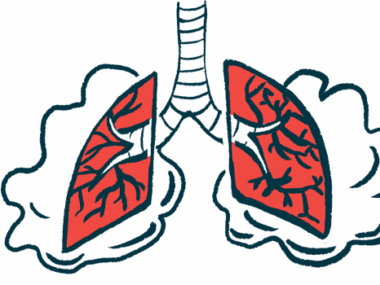The eruption of Mount St. Helens and a different kind of rumbling
The birthday of a columnist's late son reminds her of another dramatic event
Written by |

I was born on an Air Force base in Tacoma, Washington, but I grew up in Fort Worth, Texas. Texas was a wonderful place despite the chiggers, mosquitoes, and traffic. It was also oppressively hot in the summer, when only ice-cold watermelon, iced tea, ice cream, and Mexican food sounded remotely enticing.
On May 18, 1980, Mount St. Helens — just spittin’ distance from Tacoma — erupted. It was the most destructive eruption in U.S. history. Those of us who were 2,000 miles away in Texas underestimated the effect it would have on our area. For what seemed like infinity, temperatures in Fort Worth climbed to an unfathomable 120 F. We were warned to stay out of the heat and leave our car windows down. Tabloid magazines reported that the buckling of asphalt roads was due to giant earthworms breaking through them.
One surprise after another
Fast-forward 16 years, and a slew of surprises occurred in our lives. In 1985, my husband, Randy, and I left Texas and, in time, moved to the North Carolina mountains. We wanted to be closer to my parents, who were innkeepers at the family’s newly acquired lodge. It was an unexpected venture for my folks — and our entire family.
In awe of our good fortune at having found a house in a beautiful setting, we considered it our final destination. We were grateful that our children, Matthew and Katie, would grow up in a spectacularly gorgeous rural community.
Less than a year later, God plopped another surprise in our middle-aged laps. Incredulously suspicious of what was causing me occasional dizziness, I scoured the county phone book and made an appointment with a family doctor who delivered babies. The nurse cheerily informed me that my pregnancy test was positive “fast,” whatever that meant. She asked if the baby was planned (um, nope), and before I could process this totally unexpected turn of events, she asked if the baby was wanted. Still reeling, I knew the answer was a resounding “yes,” but I couldn’t believe she was addressing that question to me.
Baby Jeffrey arrived on May 18, 1997, 17 years after the historic eruption of Mount St. Helens. He was absolutely beautiful and easygoing — and he harbored a rumbling of a genetic nature.
Puzzle pieces
Eight weeks after Jeffrey’s birth, we experienced our own historic eruption when he was diagnosed with spinal muscular atrophy (SMA), the leading genetic killer of children under 2. According to the pediatric neurologist, Jeffrey had a severe case of type 1, the deadliest form of SMA.
God, no.
I’m confident that God’s plans work for our own good. I admit, though, that his blessing us with an unplanned baby and then seeming to renege made no sense to me. SMA’s insidious nature and everything it caused were unbearable at times. I didn’t understand any of the “why.”
Slowly, though, circumstances began making sense. A miscarriage I’d had years before enabled me to acquire special education certification. A subsequent teaching assignment I’d had in South Carolina was in a self-contained school for students with various conditions and disabilities — including SMA, I discovered after Jeffrey’s diagnosis. Suctioning, tube feeding, and repositioning Jeffrey replaced academics. Whatever expertise I had gained that year of teaching made caring for Jeffrey easier, at least in some ways.
Regarding the old farmhouse we eventually bought, it hadn’t even officially hit the market yet when the real estate agent showed it to us, as the owners had suddenly and unexpectedly been transferred … to Texas. Although it’s nothing like what I’d insisted we needed, it felt like home from the get-go.
Additionally, the baffling nonrenewal of Randy’s coaching and teaching contract just before Jeffrey’s arrival allowed him to be at home, where he helped immensely with Matthew and Katie and handled virtually all of the household and yard duties. He tackled phone calls relaying the diagnosis, made funeral arrangements, and announced Jeffrey’s last breath.
The most notable puzzle piece has been the little mountain on our property that contains an old cemetery. Deemed perfect for our respective resting spots, we had no inkling that our baby would have first dibs. What we’d considered the best spot in the house happened to be just a few feet from where an infant girl is buried. Clara — which is also the name of our granddaughter — was 5 months old when she died. So was Jeffrey.
I’m so appreciative to have such easy access to Jeffrey’s resting spot, where I can reflect and regroup in a sanctuary setting. It’s quite the contrast to the upheaval generated by a volcano, hurricane, ice storm, or SMA diagnosis.
Note: SMA News Today is strictly a news and information website about the disease. It does not provide medical advice, diagnosis, or treatment. This content is not intended to be a substitute for professional medical advice, diagnosis, or treatment. Always seek the advice of your physician or other qualified health provider with any questions you may have regarding a medical condition. Never disregard professional medical advice or delay in seeking it because of something you have read on this website. The opinions expressed in this column are not those of SMA News Today or its parent company, Bionews, and are intended to spark discussion about issues pertaining to spinal muscular atrophy.








Leave a comment
Fill in the required fields to post. Your email address will not be published.